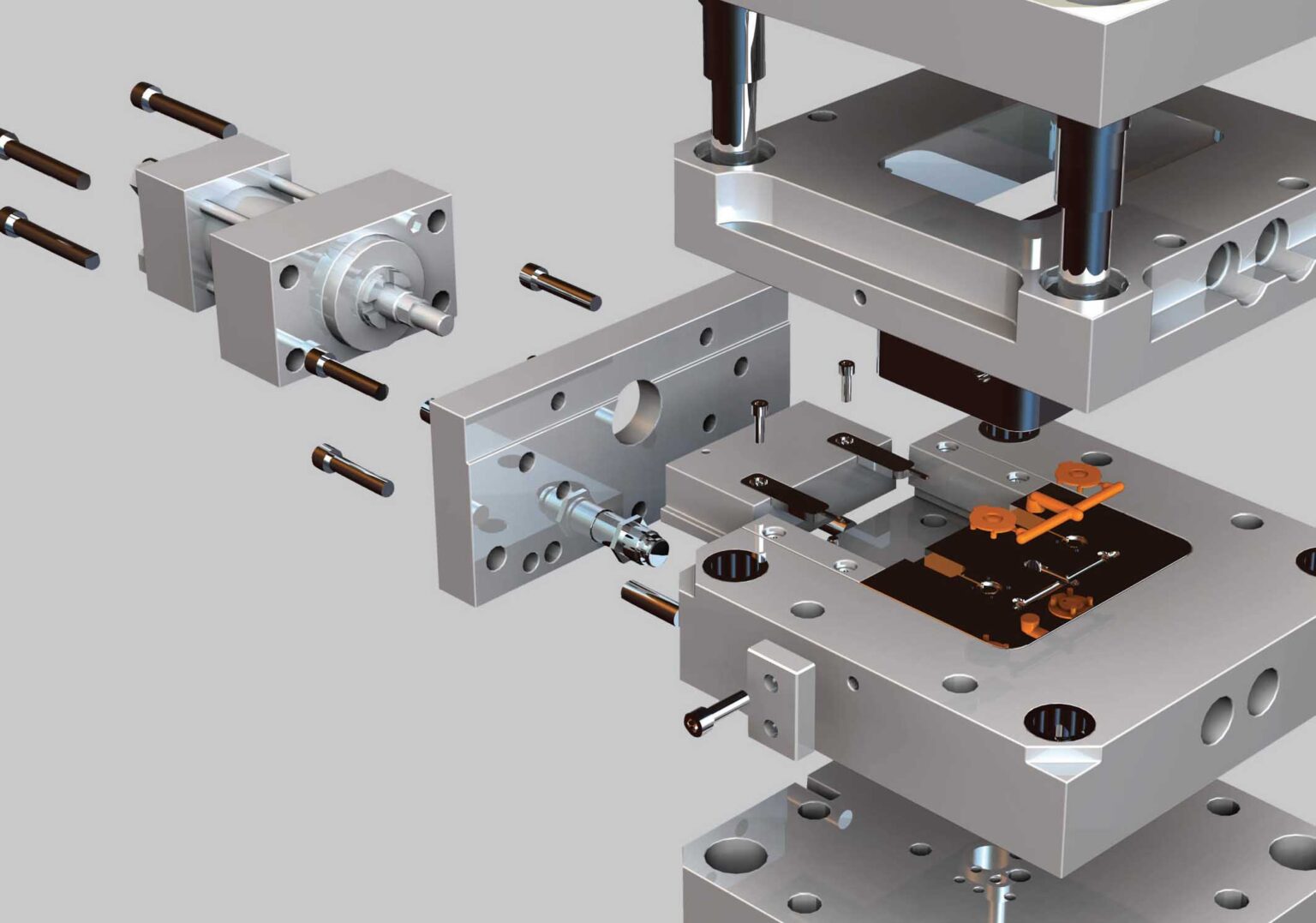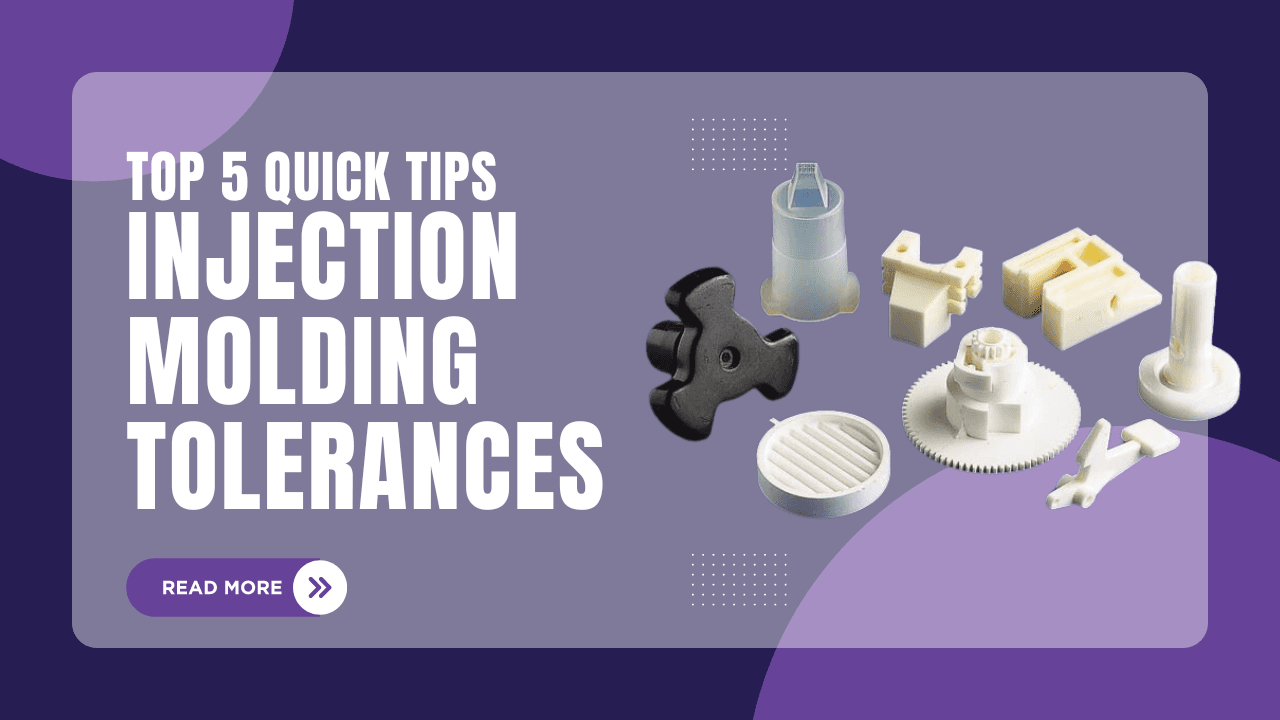A Guide to Achieving Flawless Plastic Parts
Injection molding tolerances are a versatile and cost-effective manufacturing process for creating high-quality plastic parts. However, for a successful outcome, understanding injection molding tolerances is crucial. Tolerance refers to the allowable variation in a part’s dimensions from the intended design. Even minor deviations can impact the functionality, assembly, and aesthetics of your plastic parts.
This delves into the world of injection molding tolerances, equipping you with the knowledge to achieve flawless plastic parts. We’ll explore critical factors influencing tolerances, material selection’s impact, and design considerations for optimal results.
The Importance of Injection Molding Tolerances
Imagine a scenario where two injection-molded parts, designed for perfect assembly, have slight dimensional variations due to tolerance issues. This could lead to parts that don’t fit together properly, compromising the product’s functionality. Injection molding tolerances ensure consistency and precision, guaranteeing parts meet the design specifications and function as intended.
Tolerance is vital for several reasons:
- Assembly: Parts need to seamlessly fit together during assembly. Precise tolerances prevent issues like misalignment, gaps, or tightness, ensuring a smooth and efficient assembly process.
- Functionality: Injection Molding Tolerances directly impact the functionality of the final product. Deviations outside the tolerance range can affect features like snap fits, leak-proof seals, or precise movements.
- Aesthetics: In many applications, visual appeal is crucial. Consistent dimensional control through injection molding tolerances guarantees a uniform and aesthetically pleasing final product.
Factors Influencing Injection Molding Tolerances
Several factors influence the achievable tolerances in injection molding. Here’s a breakdown of the key contributors:
- Material Selection: Different plastic materials exhibit varying shrinkage rates during cooling. Material selection plays a significant role in determining the achievable tolerance range for your parts.
- Part Geometry: The complexity of your part’s design can influence tolerance. Features like thin walls, sharp corners, or deep ribs can be more susceptible to dimensional variations.
- Mold Design: Mold design is paramount for achieving precise tolerances. Factors like wall thickness, uniformity, gate location, and cooling channels all play a role.
- Manufacturing Process: Injection molding process parameters like injection pressure, melt temperature, and holding time can also affect part dimensions. Maintaining consistent process control is essential.
Material Selection and Its Impact on Tolerances
As mentioned earlier, material selection significantly impacts achievable tolerances in Injection molding. Here’s a brief overview of how different material properties affect tolerances:
- Crystallinity: Crystalline plastics exhibit higher shrinkage rates compared to amorphous ones, which translates to wider tolerance ranges. Typically, crystalline materials have tolerances around ±0.010 – ±0.020 inches.
- Shrinkage Rate: When selecting a material, it is crucial to consider its shrinkage rate. Plastics with lower shrinkage rates allow for tighter tolerances, typically around ±0.002 – ±0.005 inches.
- Glass Transition Temperature (Tg): The Tg of a plastic influences its dimensional stability at various temperatures. Selecting a material with a high Tg is beneficial for applications requiring tight tolerances across varying temperature ranges, generally achieving tolerances around ±0.005 – ±0.010 inches.
By carefully considering these material properties, manufacturers can optimize the dimensional accuracy and stability of injection-molded parts, achieving the desired tolerances for specific applications.
Design for Manufacturability (DFM) and Achieving Tighter Tolerances
The concept of Design for Manufacturability (DFM) plays a crucial role in achieving tighter tolerances in injection molding. Here are some DFM principles to consider:
| DFM Principles | Description | Typical Tolerance Numbers |
|---|---|---|
| 1. Wall Thickness Uniformity | Maintaining consistent wall thickness throughout the part minimizes variations due to uneven shrinkage. This helps in achieving more predictable and tighter tolerances across the entire part. | ±0.005 – ±0.010 inches |
| 2. Draft Angles | Incorporating appropriate draft angles on vertical walls facilitates easier part ejection from the mold, reducing potential tolerance issues. Proper draft angles also reduce the risk of damaging the part during ejection. | 1-2 degrees |
| 3. Rib Design | Designing ribs with proper dimensions and radii minimizes stress concentrations and improves dimensional stability. Well-designed ribs help maintain part integrity and achieve tighter dimensional tolerances. | Rib thickness: ≤ 60% of wall thickness<br> Radius: ≥ 0.020 inches |
| 4. Gate Location | Strategic gate placement ensures uniform material flow and minimizes warpage, leading to tighter tolerances. Proper gate design and placement are crucial for controlling the filling pattern and reducing defects such as sink marks and voids. | ±0.005 – ±0.010 inches |
By following these DFM principles during mold design, you can significantly improve the manufacturability of your parts and achieve tighter tolerances.
Balancing Cost and Tolerance Requirements
While tighter tolerances offer greater precision, it’s important to consider the cost implications. Injection molding tolerances directly impact the complexity of mold design and manufacturing processes. Tighter tolerances often necessitate more sophisticated molds and precise process control, leading to higher costs.
Finding the right balance between injection molding tolerances and cost is essential. Carefully evaluate your application’s requirements. For non-critical features, wider tolerances might be sufficient, offering a cost-effective approach. Conversely, for critical features or parts requiring high precision, tighter tolerances might be necessary, even if it means slightly higher costs.

Tolerance Stack-Up by Considering the Cumulative Effect
In assemblies involving multiple injection-molded parts, it’s crucial to consider tolerance stack-up. This refers to the cumulative effect of individual tolerances on the final dimensions of the assembled product. Even small tolerance variations in each part can significantly impact the overall assembly dimensions if not properly accounted for.
Tolerance stack-up analysis helps identify potential issues and ensure the assembled product meets the desired specifications. Mold design software often incorporates tolerance stack-up analysis tools to help designers predict and mitigate potential problems.
Partnering with Frigate for Flawless Parts
Injection molding tolerances are a crucial aspect of achieving high-quality and functional plastic parts. By understanding the factors influencing tolerances, carefully selecting materials, and adhering to DFM principles, you can ensure your parts meet the necessary specifications. Throughout this journey, Frigate- your injection molding partner, is here to guide you.
Your Expert in Achieving Desired Tolerances
Effective communication with Frigate is vital for success. Clearly communicate your tolerance requirements for each critical dimension of your part. Our team of experts possesses extensive knowledge of injection molding tolerances and can advise you on achievable tolerances based on your part design, material selection, and budget.
Collaboration throughout the design and manufacturing process is essential. Frigate, your trusted injection molding partner, can provide valuable insights on mold design optimization and manufacturing process control strategies to achieve your desired tolerances in a cost-effective manner.
Frigate is a leading provider of injection molding services with a proven track record of delivering high-precision plastic parts. We understand the importance of tolerances and can help you navigate the process from design optimization to material selection and mold manufacturing.
Frigate is your one-stop shop for injection molding. Contact us today to discuss your project requirements and explore how we can help you achieve flawless plastic parts within your desired tolerances and budget. Let’s work together to turn your vision into reality.




